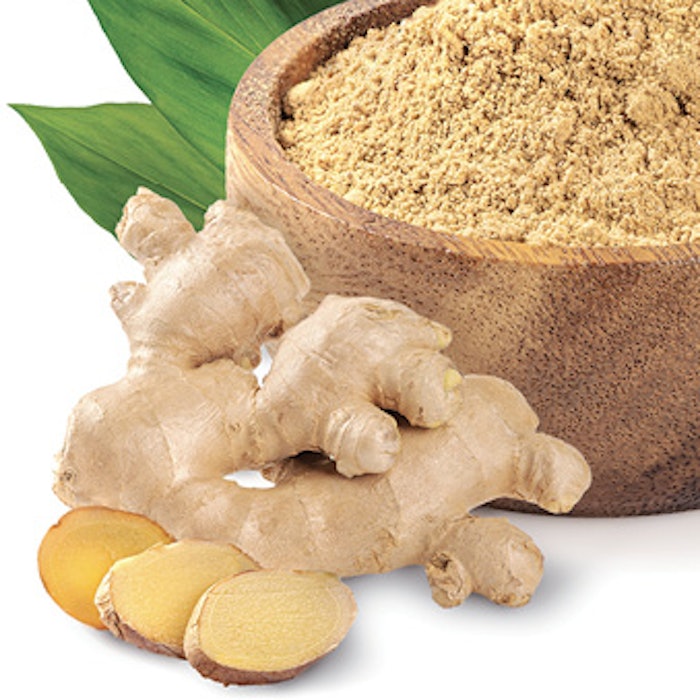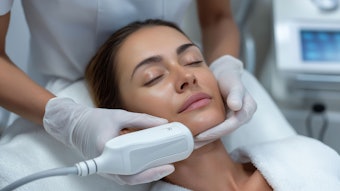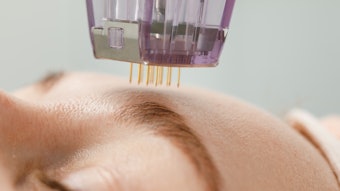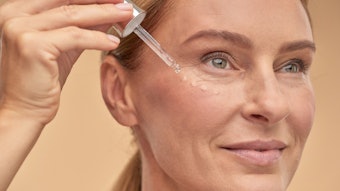
Acetyl zingerone is gaining prominence in the skin care industry for its ability to effectively defend against environmental aggressors and reduce wrinkles. The ginger-derived antioxidant serves as an omni-antioxidant because it’s able to scavenge and neutralize a broad range of free radicals known to impair skin’s health and appearance.
Usage levels in cosmetics range from 0.5¬–1% if the primary goal is an antioxidant benefit; Acetyl zingerone can also be used as a chelating agent when used at 0.1–0.2% concentration levels.
The ingredient is particularly good at soothing UV-exposed skin due to its strong photostability, interrupting the cascade of damage UV light causes on and within the skin. Acetyl zingerone can also help protect from HEV or blue light exposure because it plays a role in diminishing mottled pigmentation due to exposures across the visible light spectrum, meaning it helps protect skin from visible (blue or HEV) light exposure.
Janna Ronert, esthetician and founder of IMAGE Skincare, considers the ingredient a “next-generation super-antioxidant” for its efficacy at defending skin from typical aggressors. IMAGE MD’s power-C serum features acetyl zingerone as one of its main active ingredients.
“When used in skincare, acetyl zingerone actively works to improve skin brightness and tone,” Ronert said. “Acetyl zingerone can help stabilize Tetrahexyldecyl Ascorbate (THD) and ensure it stays fresh and efficacious for longer shelf life. The IMAGE MD restoring power-C serum is a vitamin C serum that goes above and beyond to maintain stability, featuring acetyl zingerone, along with super-powered ingredients like 20% tetrahexyldecyl ascorbate, ferulic acid, vitamin E and hyaluronic acid.”
Acetyl zingerone can deliver anti-pollution benefits and helps interrupt the damage certain enzymes in the skin can cause to collagen. Some ingredients it is typically combined with include hexylresorcinol, ferulic acid and hyaluronic acid, according to Ronert.
“Acetyl zingerone can be combined with an ingredient called Hexylresorcinol which makes it more effective in managing skin pigmentation,” Ronert said. “In addition, the synthesis of ferulic acid and acetyl zingerone enhances the effects of vitamin C, and hyaluronic acid retains moisture and hydrates the skin, resulting in an overall plump and firm appearance.”
Research from the Journal of Cosmetic Dermatology (JCD) have confirmed the ingredient’s efficacy, including one blind study in May 2020 of 31 adults that showed significant decrease in wrinkle severity. The participants applied either a 1% acetyl zingerone cream or placebo cream to the full face twice daily for eight weeks. Assessments were made using facial imaging analysis photography and software.
Results showed a significant decrease in average wrinkle severity, reductions in total wrinkle volume, pigment intensity and redness intensity in the acetyl zingerone group, and no skin sensitization was observed.
A January 2023 clinical study found similarly promising results, indicating a significant improvement in post UV exposure with the use of acetyl zingerone. The ingredient also upregulated the expression of nucleotide excision repair, and its analogs were non-toxic to the skin cells and did not act as photosensitizers. The study concludes that the ingredient would make a great additive in sunscreen and specialized clinical applications.
Both studies suggest that the chemical and clinical effects of acetyl zingerone demonstrate potential to be a next-generation antioxidant for modern anti-aging, skin care and skin health applications.











